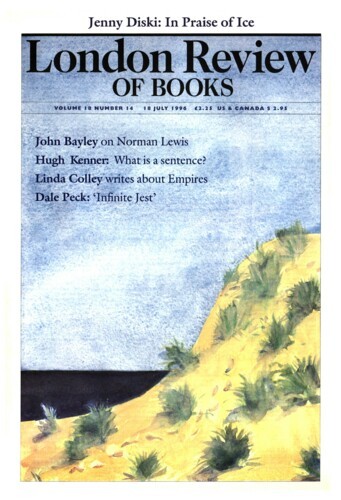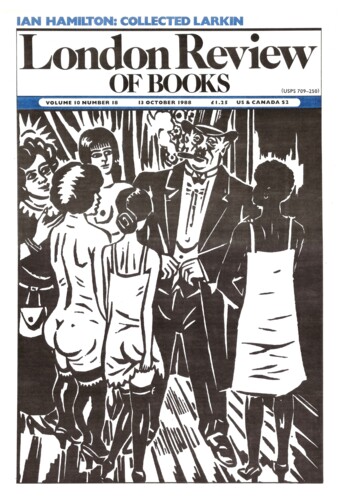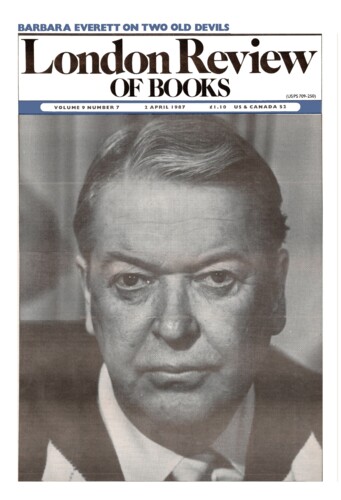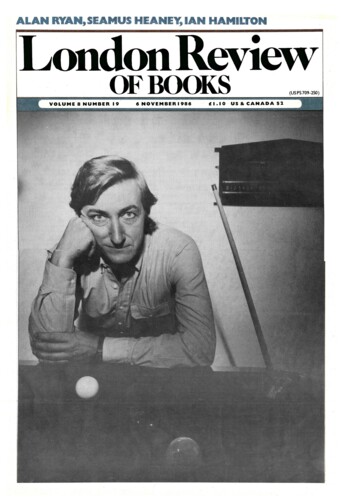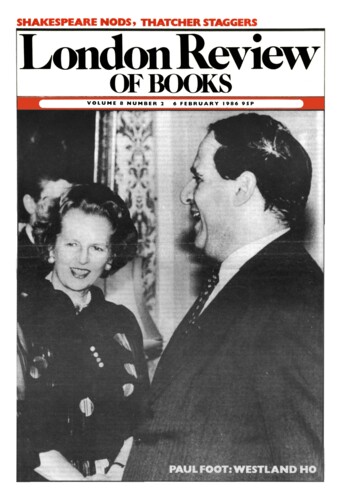Belonging
John Kerrigan, 18 July 1996
In Irish poetry, from Ó Rathaille to the rebel songs, a paradigmatic encounter recurs. Up on a hill, or down by the glenside, the poet meets a woman who celebrates Ireland’s pastand speaks of national redemption. This emblematic figure, often glimpsed in a vision or ‘aisling’, can be a glamorous maiden awaiting her Stuart prince, but she also appears as the ‘poor old woman’ of the patriotic ballads. Whether praising the sacrifices of ‘the bold Fenian men’ or complaining (after 1921) of the bondage which shackles one of her ‘four green fields’, this plangent yet bloodthirsty crone is as worn a cultural token as those related feminine stereotypes, Dark Rosaleen and Cathleen Ní Houlihan. In the rapidly modernising Ireland of satellite TV and legalised divorce, she might seem an exhausted figment. Remarkably, however, the Shan Van Vocht keeps cropping up in verse, as though poets hoped that renewed encounters could release the energies still locked in archaic nationalism, and clarify relations between patriotic sentiment and sexual politics.
